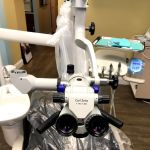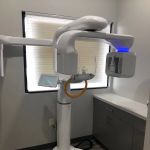Early Detection of Orthodontic Issues in Children – A Guide for Parents
As a parent, you want the best for your child, and that includes ensuring their oral health is in good shape. Early detection of orthodontic issues in children is crucial for preventing future complications and ensuring a beautiful, healthy smile. In this guide, we’ll explore how to identify potential orthodontic problems early, the importance of early treatment, and how you can help your child achieve optimal oral health.
1. What Are Orthodontic Issues in Children?
Orthodontic issues in children are problems that affect the alignment of the teeth and jaws. These issues can range from mild misalignments to more severe conditions that affect your child’s bite, such as overbites, underbites, crossbites, or crowding of the teeth. Identifying these issues early allows for timely intervention, which can lead to less invasive treatment and more successful outcomes.
Orthodontic issues often develop as children’s teeth and jaws grow and change. Some of these problems may not be visible at first, but with early detection, your dentist or orthodontist can monitor your child’s development and recommend appropriate treatments when necessary.
2. Common Signs of Orthodontic Problems in Children
Recognizing the early signs of orthodontic issues can help you take action before they become more serious. Look for the following signs in your child:
- Misaligned Teeth: Teeth that are crooked, crowded, or protruding may indicate a need for orthodontic treatment.
- Difficulty Chewing or Biting: If your child experiences discomfort or difficulty when chewing or biting down, it could be a sign of bite problems.
- Thumb-Sucking or Mouth Breathing: Prolonged thumb-sucking or habitual mouth breathing can affect the development of the teeth and jaws, leading to orthodontic issues.
- Speech Problems: Difficulty pronouncing certain sounds or words may be related to alignment issues with the teeth or jaws.
- Jaw Pain or Clicking: Jaw pain or a clicking sound when your child opens or closes their mouth can indicate issues with the alignment of the bite or the temporomandibular joint (TMJ).
3. Why Early Detection of Orthodontic Issues Is Important
Detecting orthodontic problems early can make a significant difference in the type and length of treatment your child will need. Here’s why early intervention is crucial:
- Faster Treatment: Early detection often allows for less invasive treatments and shorter treatment times. By addressing problems while your child’s teeth and jaws are still developing, orthodontic treatment can guide proper growth.
- Prevention of Future Issues: Correcting issues early can prevent more serious dental problems later on, such as tooth loss, difficulty chewing, or speech issues.
- Improved Aesthetics and Function: Early orthodontic care can enhance the appearance of your child’s smile and improve their ability to chew and speak properly.
- Increased Confidence: Early intervention can prevent emotional and social difficulties caused by crooked teeth or bite problems, boosting your child’s confidence.
4. When Should You Take Your Child to an Orthodontist?
The American Association of Orthodontists recommends that children see an orthodontist by the age of 7. At this stage, the orthodontist can assess your child’s dental development and identify any potential issues that may require early treatment. While not all children need early orthodontic treatment, an early consultation allows the orthodontist to track growth patterns and intervene when necessary.
Even if your child doesn’t need immediate treatment, the orthodontist can monitor their development and provide guidance on when to begin treatment to achieve the best results.
5. Treatment Options for Early Orthodontic Issues
There are several treatment options available for children with orthodontic issues. The type of treatment will depend on the specific problem and your child’s age:
- Early Intervention Appliances: For young children with developing bite problems, appliances such as expanders, retainers, or space maintainers can help guide tooth and jaw growth.
- Braces: Traditional braces are commonly used to correct misalignments in the teeth and jaws. Braces are typically recommended when most of the permanent teeth have come in, usually around ages 11 to 13.
- Invisalign for Teens: Invisalign clear aligners are an option for older children and teenagers who need orthodontic treatment but prefer a more discreet solution.
6. Real-Life Case: Early Detection Leads to Easier Treatment
Consider the case of Jake, a 9-year-old boy whose parents noticed that his front teeth were beginning to protrude. After consulting with an orthodontist, it was determined that Jake had an early-stage overbite. The orthodontist recommended the use of a space maintainer to help guide the growth of his teeth and jaw, preventing the need for more extensive treatment later on. Jake’s parents were relieved that they detected the issue early, leading to a less invasive and quicker treatment plan.
7. Conclusion: Help Your Child Achieve a Healthy Smile with Early Detection
Early detection of orthodontic issues in children is essential for ensuring that their teeth and jaws develop correctly, preventing future problems, and promoting a healthy, confident smile. If you notice any signs of orthodontic issues in your child, don’t wait—schedule an appointment with an orthodontist to assess their needs and explore treatment options. For more information on early orthodontic care and treatment options, visit Dentistry Toothtruth and learn how we can help your child achieve optimal oral health.







 Omnia Dental5.0 (183 review)
Omnia Dental5.0 (183 review) Johnson Ebenezer DDS4.0 (12 review)
Johnson Ebenezer DDS4.0 (12 review) Smile Surfers Kids Dentistry5.0 (42 review)
Smile Surfers Kids Dentistry5.0 (42 review) South Shore Dental Care: Dory Stutman, DDS5.0 (7 review)
South Shore Dental Care: Dory Stutman, DDS5.0 (7 review) NLV Dental Group4.0 (72 review)
NLV Dental Group4.0 (72 review) South Jersey Dental0.0 (0 review)
South Jersey Dental0.0 (0 review) The Importance of Oral Health Education During Pregnancy for a Healthy Pregnancy
The Importance of Oral Health Education During Pregnancy for a Healthy Pregnancy Best Tips for Brushing Your Teeth Properly for Healthy Gums: Essential Techniques for Oral Health
Best Tips for Brushing Your Teeth Properly for Healthy Gums: Essential Techniques for Oral Health Why Skipping Dental Checkups Can Lead to Bigger Oral Health Problems
Why Skipping Dental Checkups Can Lead to Bigger Oral Health Problems Advantages of Porcelain Dental Restorations
Advantages of Porcelain Dental Restorations How Can Diabetes Cause Tooth and Gum Problems? Preventing and Managing Oral Health Issues
How Can Diabetes Cause Tooth and Gum Problems? Preventing and Managing Oral Health Issues Healthy Habits for Promoting Good Oral Health and Hygiene: Tips for a Healthy Smile
Healthy Habits for Promoting Good Oral Health and Hygiene: Tips for a Healthy Smile